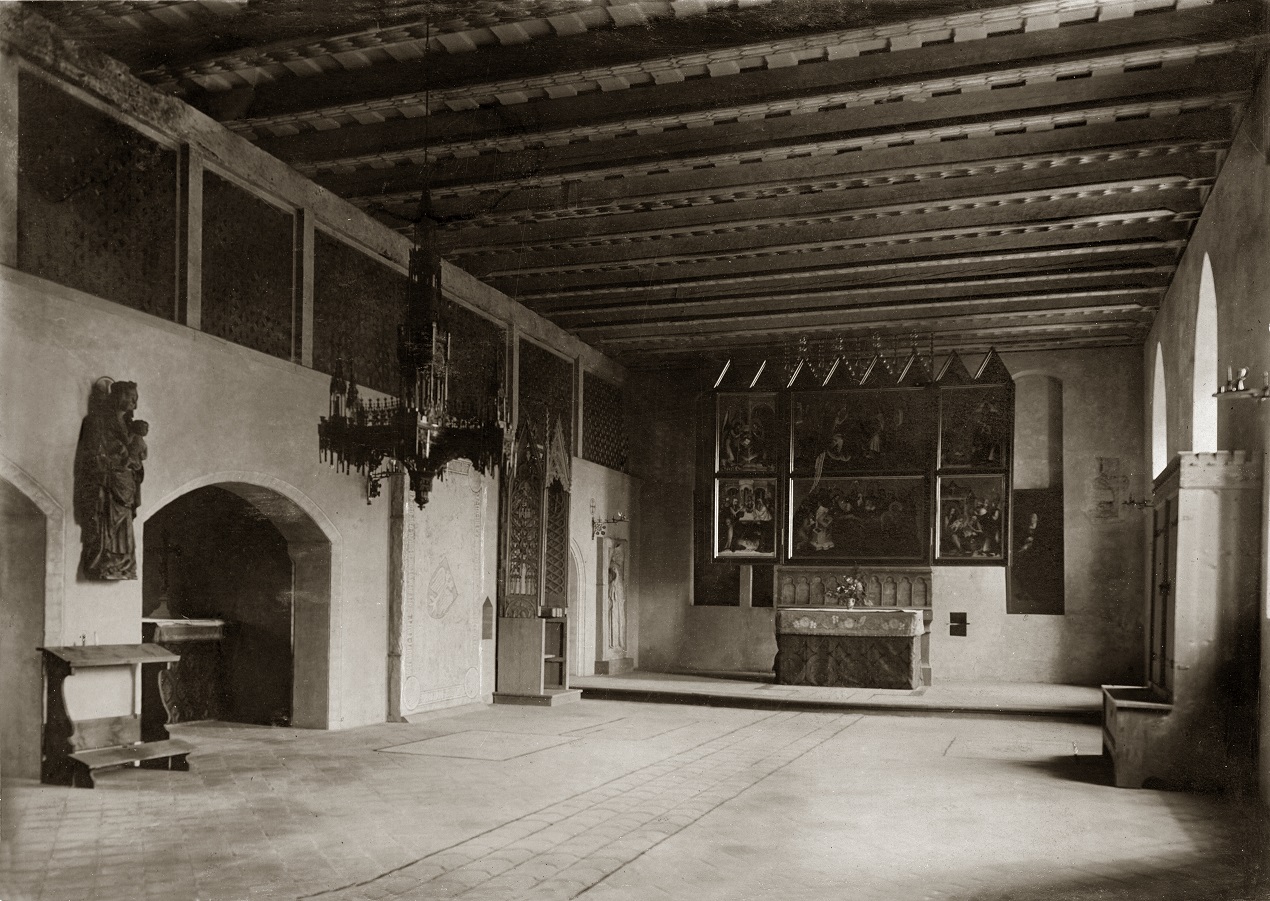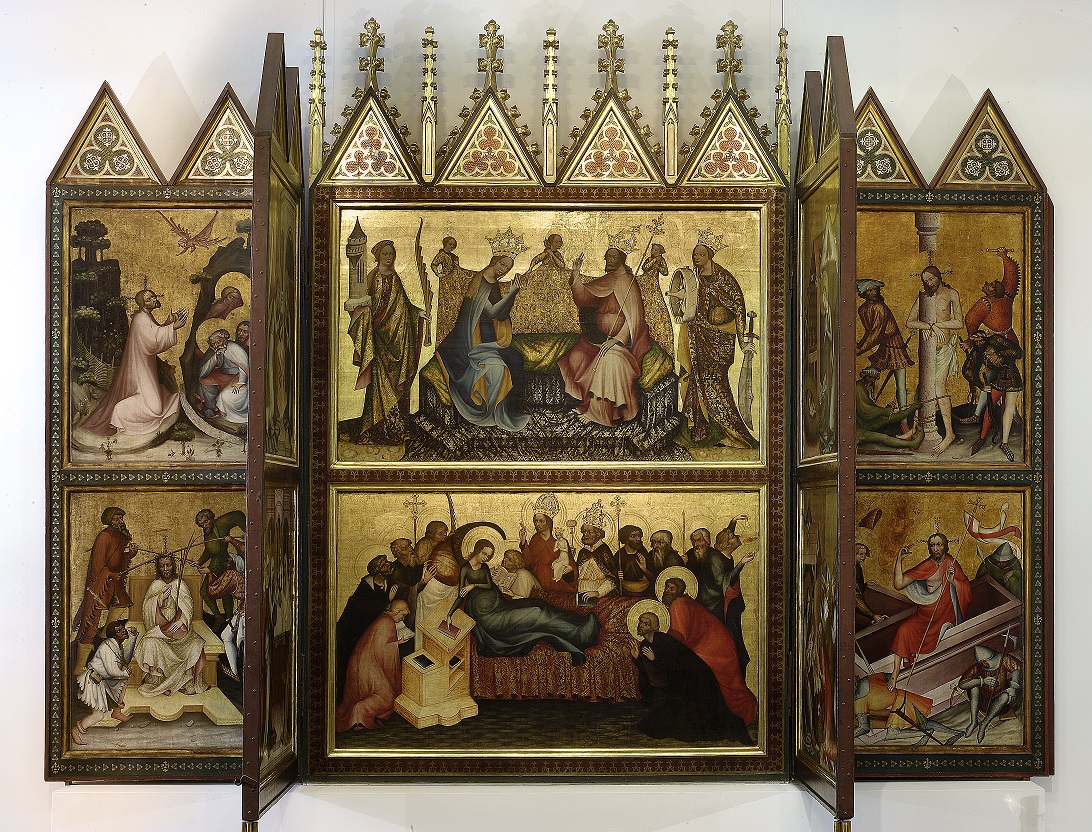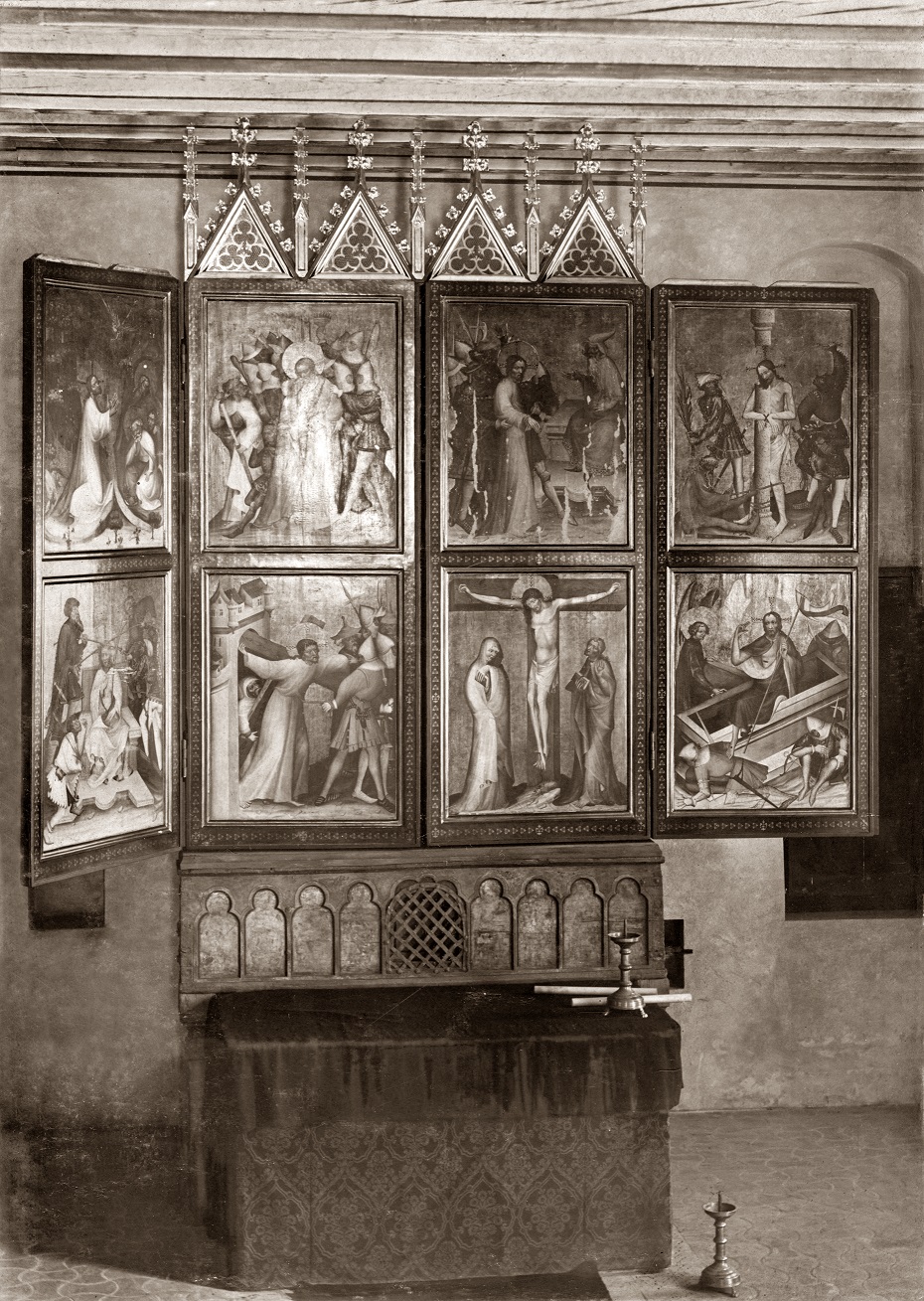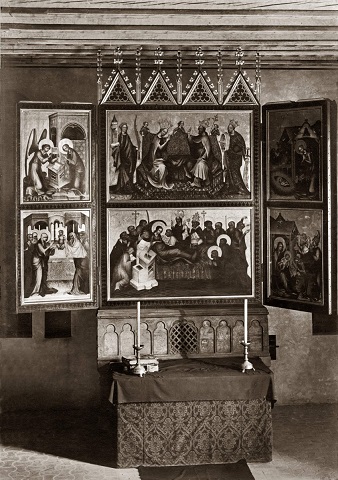The work of the Pomeranian workshop under the influence of the Czech workshop “Master of the altar from Třeboň” (active in the 60s and 70s of the fourteenth century)
Time of creation: approx. 1390
technique: tempera, gold leaf
material: white fir board, canvas, gold and silver flakes
dimensions: 280 x 214 cm (center panel), 284 x 116 cm (side panels)
pre-war inventory number: Inventory of the High Castle, no. 797
current owner: National Museum in Warsaw ( inv. no. Śr. 22/1-5)
Provenance: Probably funded by the Teutonic order residing in the castle in Grudziądz to the local chapel. After the demolition of the castle chapel in 1798, the retable was moved to the parish church of St. Adalbert in Grudziądz. Then the side wings and the central board were sawn into individual paintings; Then they were hung on the southern and northern walls of the church. In 1883, the Westpreussisches Provinzialmuseum in Gdańsk purchased seven double-sided painted quarters (from the side wings), while the eighth quarter, with the Scene of the Resurrection of Jesus, remained in Grudziądz, in the local cemetery chapel. Two scenes from the central panel also remained in place: Dormition and Triumph of Mary. In 1909, all seven quarters in the Gdańsk museum went to the castle in Malbork. In 1912, the eighth plot and two central scenes (cleaned by the local painter Gustav Breuning), remaining in Grudziądz, were also purchased for Malbork. After being cleaned in 1912–1916 by Andreas Wesołowski, all elements of the retable were re-integrated; forming a pentaptych consisting of a central part and two pairs of side wings. By decision of Conrad Steinbrecht, the altar was placed in the church of St. Francis in 1916. Lawrence on the northern ward and remained there until the end of World War II. Probably in 1944, on the order of Bernhard Schmid, the retable was hidden in the basement of the church and it was not until the autumn of 1946 that it was found by a captain from the District Replenishment Headquarters. In December of the same year it was transported to the Polish Army Museum in Warsaw, from where in January 1947 it went to the National Museum, where it remains to this day; currently exhibited in the Gallery of Medieval Art.

Source: Marienburg Baujahr 1916, photo 39, on the right from the top, photo 44-45
The central part of the pentaptych presents two scenes in a vertical arrangement, each in the form of a lying rectangle: at the bottom the Dormition of the Blessed Virgin Mary, at the top the Triumph of Mary in heaven. The first scene presents Our Lady in the center of interest of the twelve apostles and Jesus. They surround the wide bed on which Mary lies. On either side of the double throne stand the holy virgins: St. Barbara on the left and St. Catherine on the right.
On two pairs of side wings there are placed on the obverses and reverses a total of 16 scenes from the life of Christ and Mary:
I. Left outer wing:
reverse: 1. Mary and the Sorrowful Christ, 2. Resurrection of the dead
obverse: 3. Christ’s prayer in the Garden of Gethsemane, 4. Crowning with thorns
II. Right outer wing:
reverse: 5. Christ – Judge, 6. Mary and John the Baptist as intercessors
obverse: 7. Scourging, 8. Resurrection
III. Left inner wing:
reverse: 9. Capture, 10. Bearing the cross
Obverse: 11. Annunciation, 12. Presentation in the Temple
IV. Right inner wing:
Reverse: 13. Christ before Pilate, 14. Crucifixion
Obverse: 15. Adoration of the Child, 16. Adoration of the Magi.
(Edited by Ewa Witkowicz-Pałka)
For more information visit: https://straty.zamek.malbork.pl/wizyta-w-muzeum-narodowym-w-warszawie/

Source: Przywracanie historii 2015, p. 406


